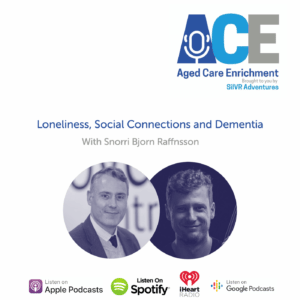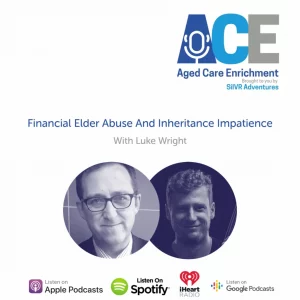Today we’re having a look at what happens in the brain when we form new meories, the links between emotion and memory and how these elements change as we age.
Our guest is Professor Pankaj Sah, the Director of the Queensland Brain Institute or QBI, from University of Queensland. Pankaj has done a lot of research into an area of the brain called the amygdala, which plays a role in consolidating new memories and in encoding them with emotional content. There’s a lot of interesting ideas in this episode and Pankaj has a great way of simplifying very complicated science.
Transcript
Ash de Neef: So Pankaj, you’re the director of the QBI, the Queensland Brain Institute at University of Queensland. Can you tell us a bit of the work and what it is you’re doing there?
Pankaj Sah: The Queensland Brain Institute is a research intensive institute which is like a faculty within the university. We were set up in 2003 and this is an institute in which everyone studies the brain. At many different levels, we’re basically interested in trying to understand how the brain works, what happens when things go wrong and trying to look for treatments for things when they do go wrong.
Within the institute we have a couple of centres. One of them is the Clem Jones Centre for Ageing Dementia. It is about a hundred people and all these people are interested in looking at neurodegenerative disorders, where brain function in aging goes wrong and dementia is one central part of that. And then we have a centre that works on things like Parkinson’s disease and motor neuron disease.
And then we have lots of people who are basically interested in the nuts and bolts of the brain, in which we understand, not a lot. We extend quite a bit, but we’re in the early days of clear understanding of what happens in the brain. So that’s the institute as a whole. My laboratory is interested in two parts. One part is interested in the medulla, which is a small bit of the brain. A lot of people might’ve heard about the medulla, that it’s an almond shaped structure and is involved in processing emotions and laying down memories associated with emotions.
A lot of disorders, like anxiety disorders, are due to dysfunction in these areas, broadly speaking. The other half of my lab works with people. Looking at Parkinson’s disease and movement disorders like essential tremor and dystonia. But again, we’re also interested in emotional disorders like obsessive compulsive disorder and anorexia – and we’re using deep brain stimulation. This is a collaboration with a bunch of clinicians where we’re inserting electrodes into people’s brains to treat them for all these different diseases – for which there’s no cure right now.
Ash de Neef: Yeah, that sounds fantastic. There’s so many different areas to go here. I think what we’d love to talk about today is looking at the amygdala and memory and how emotion plays into the formation of memories. But maybe before we get to that point, what are memories and how are they formed?
Pankaj Sah: Yeah, memories. It’s an interesting question. Right? Because we all kind of understand what memories are. You know, if you asked the average person, “what’s a memory?” They’ll tell you things like, “what’s the capital of Australia?”. But, in fact, there’s two kinds of memories ; there’s declarative memories and there’s memories that have to do with things basically.
So there’s memories of events and places like ; what you had for breakfast yesterday, what was your mum wearing, what happened on the day you behaved badly and got either a thrashing from your parents or if you got grounded. All those kinds of things.
Then there’s the other kinds of which are to do with actions. Whether you know how to ride a bike or you know how to play the piano or you know how to do certain actions that have to do with your motion and getting around. How do you find your way home?
Things like that. So those are the two kinds of memories there are. So memory is some event or action that’s laid down so your body can perform it or you can bring it to your notice. So you can function in the environment.
And your memory is what makes you who you are. You know, because you think about it yourself, why do you behave in the ways that you do? You know, why do you smile for certain things? Someone offers a glass of wine, you say, I’ll have a glass of red, or I don’t eat meat, all those kinds of things that come from your memories basically.
If you lose your memories, – you know, people who are getting dementia or they’ve had it – among the other things that happen, the problem really is they’ve stopped being the people that they are. This is what people often mention, you know? Oh, you know, my dad is still my dad, but he stopped being the person he used to be.
He’s doing strange things now. That’s not how I remember him or how I interact with him. And that’s all got to do with his memories. So memories are an absolutely critical part of us as human beings. And they make each of us the individuals that we are. So that’s where memories sit.
Ash de Neef: Yeah, incredibly important. You’re right, in identity and all those aspects. I didn’t know that there were two different types. So there’s a factor or statement based and a kinesthetic sort of memory there. Are they stored and accessed in different ways?
Pankaj Sah: They are kind of stored in different places, but the mechanisms we’re laying them down are thought to be very similar. And, I’ll talk a lot about laying down memories, but realistically, these are just ideas that we have, right? These are the theories that exist right now. We know quite a bit about very basic sorts of memories. We can talk about what a basic memory might be, but when you come to the kinds of memories that are important to us, like let’s say, what do you remember about your mum and all sorts of things.
Apart from what her face looks like, what she’d say to you, the music that she liked.. things like that we don’t have much of an idea at all of what it is that’s actually laid down there. And that’s really the most critical part of our memories. Simpler things, we have a much better idea, but can talk about that as we go along.
Ash de Neef: What do you mean by simpler things? Like facts?
Pankaj Sah: No, not even facts. It’s like this. So suppose I play you a tone or just a sound. Each time I play the tone, I give you a whack on the back of the head. And I do this four or five times or I give you an electric shock or something like that. Pretty soon, you learn that every time you hear the tones, you’re going to get a whack in the back of the head. All right, that’s a simple memory. That’s an association. One thing with the other. And these are the kinds of memories we know a little bit about.
The other thing we know about is, how you might know you are in a particular place ; you look around the house, you say, “Oh, I’m in the bedroom” or “I’m in the lounge room”. That’s a very simple memory. It’s about the place and we think we understand a bit more about the place. But anything they do where there is an emotion attached to it, like, why does that make you feel good? Or, let’s say the taste of a peanut butter sandwich. Those are the kinds of memories, which we don’t have much of an idea about. What is it that gets stored?
Pankaj Sah: Let me give you an example. The last time you saw your mum, it’s pretty clear. If I said to you, oh, so what was she wearing a little red lipstick or was it green?
And I bet you can’t remember that. But at other times, say she was going out to a party, “Oh God, I remember that time and she was wearing Prada”. So what was it about that occasion that made you lay down those memories? So tose are the specific aspects of memory, which we have zero idea about how they get laid down.
Ash de Neef: Yeah. Yeah wow.
Pankaj Sah: But we are very good at it. Human beings are fantastic at laying down those memories.
Ash de Neef: It sounds like there’s lots of mysteries yet to uncover. I’m wondering when you mentioned that example of identifying that ‘I’m in a bedroom’, there’s some aspect of memory that is correlational matching what you’re seeing outside, what you’re perceiving with something that you have laid down already, right?
Pankaj Sah: So memories are two things, right? So one thing is stuff that’s laid down, but your recollection of it is always, let’s say it interacts with what’s happening really right now. What’s coming in and your brain, what your brain does in terms of your memories and everything else – it’s like a matchmaking device, if you like in some ways, all right.
It’s always comparing what’s coming in and through our senses we have an enormous amount of information coming in all the time and it’s always comparing what happened previously. And it’s matching the two and when the two match, very little happens, but as soon as there’s some discrepancies, you pay attention. That’s what’s really interesting.
Ash de Neef: Correct.
Pankaj Sah: So that’s why memories are so integral as a human being. Cause how you move around in the world and do the things you’re doing. It comes from this matchmaking that the brain is doing constantly.
Ash de Neef: So with this idea of laying down a memory, this is some sort of process. Is this an instantaneous process? Is this a long process? How do things become transferred or encoded into memory?
Pankaj Sah: For most of us, what happens is that the time that something happens and is relevant to your life, and we can talk about what that might mean. Those memories get laid down as short-term memory, right? So they’re immediately stored somewhere for a brief period. And that’s what’s called plasticity in your brain. So something changes in your brain to lay that down immediately. And then, or the period of hours to days, it gets consolidated. And that consolidation process is slow.
And your memories, we think, gets spread out in your brain somewhere. And then once it’s consolidated, it’s laid down. And it’s laid down, so that you can record it at some point in time later, days, years, months. Then there’s also a thing called working memory. You know, when someone just says, oh, just give me a phone call. Here’s my phone number. Or, you know, and you can remember that briefly, but not going to lay it down for most of us.
You don’t lay down permanently, you know. You remember it for 5-10 minutes, whatever you need. Or we know when you go and you say, oh, look I want to buy these apples, it’s $2 a kilo, and you just started working on your head. You know, how much it’ll cost you to buy three kilos of this.
And after that, it’s gone. If somebody asked you a day later about what you paid for those apples. You remember basically how much you paid for it, but you’re not going to say, it was $2 a kilo. Right?
Ash de Neef: Yeah. It’s like a sticky note kind of thing then.
Pankaj Sah: That’s a sticky note! Exactly. A sticky note is a perfect example. It’s like a sticky note. So that’s some of the kinds of memory that we have – this thing called ‘working memory’. We need that just to get along in the day, right?
Ash de Neef: Yeah. So if my understanding is correct, then when we’re laying down these, these longer-term memories, that almond shaped part of the brain, the amygdala that we were talking about at the start there. That’s involved in somehow laying them down.
Pankaj Sah: Yeah. So what the amygdala does is it assesses the environment and tags it with the emotional conten. That’s what it really does. It’s part of the emotional processing circuitry. So something is scary or something is happy or something is sad, it’s the amygdala, which does that. And things which have emotional content get laid down very quickly and very strongly.
You think about the things that we remember, funerals, most people don’t forget funerals that there’d been, particularly if there was someone who was a loved one, right? 9/11 – That day when those planes crashed into those buildings in New York, an unbelievable event. And almost everybody remembers it. When you say 9/11, you know, those memories, those pictures of those airplanes embedded in millions of people’s minds, because of the emotional content. And for most of us, you hear a song or some perfume that was from way back when you’re 15.
Pankaj Sah: Your first girlfriend or whatever, that perfume, which you haven’t smelled for a long time, but it had a big emotional impact on you a long time ago. You haven’t thought about this for 20 years, but it comes back immediately. Everything about that person. Or, you know, some tune that goes on when you’re driving along and you hear the first few bars of ‘Smoke On The Water’. And when you were 15, this was like really hot on your list of songs you’re listening to, day in, day out. You couldn’t care less about this band right? But you hear the first few bars now you’re singing along to it and it’s all come back to you. So how did that happen? That’s your amygdala in action.
Ash de Neef: Wow. Okay. So is it the case that when the memory is laid down, the emotion is inseparable from the memory?
Pankaj Sah: Absolutely. Those strong emotions laid down pretty much permanently. And I say permanently, it’s probably not the case that they don’t change. There’s some ideas. Now that every time you record a memory, you record a little bit differently. You lay it down a little bit differently, they reconsolidate. There’s some evidence for this now as well. Your memories, you know, while they’re in place, they’re not infallible.
And they do depending on what conditions you happen to be in. If you talk to dad or your mom, and they’re telling you about something that happened in the old days, you’ll know yourself, those locations, the little things change, right? They’re not always exactly the same. And overall the picture stays the same, but, it might be you’re eating lamingtons the next time or it was like chocolate cake or something, but, you know, the cake issue is always there.
Ash de Neef: It was some version of it. Yeah.
Pankaj Sah: There’s some version of it, but the overall memory stays the same right?
Ash de Neef: Yeah. I’ve got a bit of a quirk with that, where there was a period where I was traveling a lot. And I really don’t like to tell stories from when I was traveling, because I feel like every time I tell it, it just ingrains it in one particular way of saying it. And then I lose the memory a little bit each time.
Pankaj Sah: Yeah and you know what it’s like, I mean, if you’d gone out drinking and you’ve had a few pints, your memories of those things sometimes are a lot happier than they used to be. Or the whole occasion changes.
Ash de Neef: Absolutely. I could see that the interlinking of emotion and memory can have, on one hand, a very positive benefit when you recall something that you’re fond of. But also the flip side in that, when something reminds you of something traumatic, you may relive the emotions of it, right?
Pankaj Sah: And this is PTSD, right? The worst part of PTSD, which is what happens to people, who have things happen to them, you know, not just in war zones, but people who work for ambulances, police people. All these people have bad things happen and those memories are associated with bad feelings and bad situations. And if they can be triggered by the small things, it brings back all those emotions again.
Ash de Neef: So the amygdala is linked to fight or flight as well, isn’t it?
Pankaj Sah: Exactly. So the amygdala is there to survive in the environment among other things and PTSD, the way we understand it partly has got to do with the fact that the amygdala laid down those memories. But now it’s not working out, that event is no longer true, okay. That happened at one point in time, but now it’s not happening. But maybe one theory is the reason that happens is, the amygdala is a very old structure. It originally was there to help you survive in the environment.
So you imagine, if we were wandering around the Savannah, as animals to supposedly drink water at the same spot every day. And one day you get attacked by a beast or something happens there. Now you don’t want to go there because it’s a dangerous place now, right? So you have to be acutely aware of this otherwise you might not survive. Despite the fact that it was a one off event, right? Your survival doesn’t really care about that. It’s just there to make you survive and live. And that’s very similar, right?
Something happened, you know, you’re in a war zone or something, and this bomb went off there was a one-off event, which is not going to happen again now that you’re here. But you hear this plane going off overhead or a helicopter and all of a sudden there’s a bomb about to go up, which is just not true right? But it’s embedded in there and suddenly all this memory comes back. And that’s part of what PTSD is about. And for years people thought, well, get over it.But we know now it’s something that happened to people and it’s a disorder, basically. It needs to be fixed.
Ash de Neef: Well, thinking about memory as we age and perhaps develop some cognitive challenges or dementia of some form, what’s the process of recalling a memory and how does that change as we age and these symptoms may develop?
Pankaj Sah: So for most memories, when they get laid down – you know as I said, they initially get laid down and they get consolidated, right? The initial laying down process involves a bit of the brain called the hippocampus. That’s again, an old part and intimately connected with the amygdala. The hippocampus you need for all sorts of memories. Now the hippocampus is what does the initial laying down process. The first thing that gets laid down is something to do with the hippocampus. And it’s some plastic mechanism in the hippocampus and often that works with the amygdala in unison.
Now in dementia, one of the first places that’s damaged is the hippocampus. The cells start dying in the hippocampus. So what happens in dementia is people start losing the ability to lay down new memories. So what you find with dementia is that the first thing you notice is they don’t recall what happened yesterday or what happened a week ago. But they’re all memories, the things that were laid down when they were kids or 15 years ago, those pretty much stay intact because those memories are consolidated.
And they move from the hippocampus to somewhere else in the brain and when you recall a memory, it’s those memories that get brought to the surface, those ones. And that’s typical for dementia. People can still remember all sorts of events from the past. And it’s not just for dementia. As we age, the same problem happens. So this plasticity in the hippocampus becomes less and less the older we get. Let’s say for most people that happens at some process, right?
It’s not a timeline. It’s not to say, when you turn 90, this is what you’re going to be like. Lots of people when they’re 90 are perfectly intact. Some of them have lost a bit of their memory and some of it is dementia and some of it is not dementia. Suppose I was to kill your hippocampus. And there’s people like that, who had a stroke or something and the hippocampus dies. You lose the ability to put down new memories.
So the first thing that happens is that your hippocampus is active and there’s some sort of plasticity that takes place in there. Then something changes, for lack of a better word. And that lays down the first lot of memories. But if you ask me, what is it that gets laid down? I don’t really know. I mean, we know it gets laid down, but what we don’t know is – So suppose you go out and have a party, right? You go to your favorite bakery, you have an apple pie, it has cream on it and you pay $3.50. So how would that memory get laid down?
Pankaj Sah: If you were to put into a computer, we know exactly what we put down, right? So there’s the price, there’s the photo of this pie, the fact that it had cream, it had a crust, and the amount of money that got paid. We know precisely what got laid down. And if you talk to a computer scientist, they’ll tell you exactly how it was laid down.
For us as human beings or even as animals, we don’t really know how the information is encoded. So that’s one big problem with the brain, our understanding. We have no idea how information is encoded. If you think about Google. The amount of stuff that gets laid down. There’s bazillions of photos around the place. You do a Google search for whatever you want, you get an answer quickly, right? There are algorithms that are dealing with this. And if you look it up, Google has these huge warehouses full of computers, where they store all the information.
There’s thousands of computers with hard drives in them, storing this stuff and they use thousands and thousands of megawatts of energy. Your brain which is tiny in comparison or my brain uses about five Watts of energy. All you need to do is eat a few Weet-Bix and drink a bit of milk and it’s fine. But the amount of stuff you could have stored in your brain seems about the same amount that’s stored in Google. It’s everything since you were like two or three years old that gets laid down. It’s in there somewhere, right?
But how is it encoded? We have zero idea about. Google can tell you exactly what’s stored and where it’s stored, and exactly what the format is. They know precisely, but for us, we have no answer and this is the biggest problem with the brain.
Ash de Neef: Yeah it’s fascinating it’s exciting at the same time. There’s still so much to understand with it. I’m wondering with, you know, you mentioned that with the hippocampus that’s involved in the laying down in that sort of plasticity and the people who have dementia, they’ll have some cell death or some degradation.
Pankaj Sah: Yeah and this plastic is dying. We know that for a fact.
Ash de Neef: So their ability to do that is failing. And that’s why you’ll see people who aren’t necessarily aware, but they have some memories of the past that are still very much intact. How does that translate to say, I’m sure a lot of our listeners, and I know I’ve experienced this where you’re talking to somebody who has dementia and they are very much living a reality from a different time.
I’m going to see my grandmother, I’m going back home, all this sort of stuff. What’s happening there? Are they interpreting the environment differently or what’s the actual reaction in the brain?
Pankaj Sah: Well no. So, you know, remember when we talked earlier about how your brain is always mixing and matching, what’s in your stored memory with what’s coming in right now. Like we have this conversation and you’re thinking of, okay, what’s he said, and then there’s questions being raised in your own mind and that’s partly coming from the things that are in the back of your brain, about what you understand. I say something and now you understand it.
So, and that’s this mix and match process going on seamlessly. Now what’s happening with people with dementia is that they’re not laying down new memories. And that mixing and matching process has gone awry. Now it’s mixing and matching this incoming information with stuff that was stored a long time ago. What’s happening when they haven’t got dementia, is a bit of that, but there’s also a bit of what happened yesterday. What happened two minutes ago, right?
Ash de Neef: The new context for everything then.
Pankaj Sah: New context of what happened. So obviously in this conversation, suppose you couldn’t remember anything I’d said for the last 10 minutes right? Our interaction would change completely, right? Only remembered what I’d said in the first two minutes of our conversation. You’d probably be asking the same questions again, basically.
You know this is what often happens. So in these people, that mix and match is disrupted. Which is why they’re living in a different time. For them, they’re in a different space. So what’s worse is that they’re not aware of it. That is the problem. Whereas you – talking to them – are thinking, why are you talking about this?
Pankaj Sah: Because it’s not relevant. But for that person, that’s relevant to them then, right? As far as their brain is concerned, that match is taken with those memories. And this is the most awful thing about dementia. Where the person, they know at some level, but not at the full level.
Ash de Neef: Yeah.
Pankaj Sah: And for them it seems normal. And you can’t take that away from them.
Ash de Neef: Hmm.
Pankaj Sah: And telling them, look, that’s not the way, is not going to help.
Ash de Neef: Yeah. That’s going to make people distressed.
Pankaj Sah: This is what you hear again and again, that they stopped being the person that they were. And that’s really got to do with that mix up in the memories’ process.
Ash de Neef: Going back to that idea of somebody when they have dementia, that they’re lost or grandma’s gone, or the memories that they had are not the same or their identity isn’t accessible. Are those memories gone completely, or are they just inaccessible at the time?
Pankaj Sah: We don’t really know. You know the thing that you notice with these people is not always the same from day to day, right? The thing is one day they are 20 and the very next day, they’re 35. Because it’s all jumbled up. What seems to have disappeared is the temporal order of stuff.
In a normal person, it’s pretty clear at some level, right? It’s not exactly right. But you know what happened when you were 16 versus when you were like 25, you can kind of see the differences. And you say, oh, that was when I was this old.
And sometimes that gets jumbled up a little bit in us as well. So, you know, four or five years, you might be out by a couple of years. It doesn’t really matter that much. But it’s never the case that events that happened in your forties are then sometimes seem to be jumbled up, but events that happened when you were 20, it’s pretty rare for that to happen, right?
Ash de Neef: Absolutely. It kind of reminded me like a way of thinking of it then is that, you know, you go to a library and there’s this very rigid ordering system for where the books go, the Dewey Decimal System, but perhaps in somebody who has dementia, the librarian is negligent or that they’re placing books in a wrong area.
Pankaj Sah: It’s very much like that. You know, your life in some ways is set out in these bits of episodes, if you will, which come back and you know, when you were 16, the things your parents did seem kind of crazy, but then when you’re 35 and have your own kids, you look back and think about it, that wasn’t so crazy after all.
Because now you’re doing them right? But that wouldn’t be, you wouldn’t be thinking that the temporary order wasn’t set up in your brain, with the emotional impact that it had. Which is what makes us human beings so cool.
Ash de Neef: Yeah, absolutely. Pankaj, this has been such a fantastic conversation. If people want to find out more about your work and about the work of the QBI, they can go to https://qbi.uq.edu.au/. Thanks so much for your time Pankaj.






